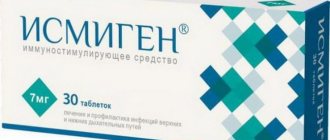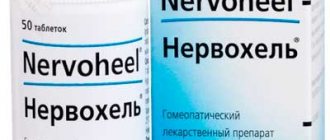Update date: 05/11/2020 14:27:55 130600 Share:
Author: Boris Ginzburg
*Review of the best according to the editors of simplerule.ru. About the selection criteria. This material is subjective in nature, does not constitute advertising and does not serve as a purchase guide. Before purchasing, consultation with a specialist is required.
Everyone intuitively understands what edema is. This is a condition when excess fluid, that is, water, accumulates not in the vascular bed, but in tissues, intercellular fluid, or in various cavities of the body. The main cause of edema is a change in water pressure in the capillaries, or hydrostatic pressure. After all, the capillary bed is extremely huge in area, and far exceeds the area of large main vessels.
The second reason can be considered a drop in blood plasma pressure associated with protein concentrations, or oncotic pressure, along with an increase in oncotic pressure in the intercellular fluid. The cause of increased fluid accumulation in tissues may also be a violation of lymph flow. In old age, edema is most often a complication, and it can be considered a marker of severe pathology of the cardiovascular system, especially if the edema is located in the legs.
If swelling exists on the face, this most often indicates chronic kidney pathology. Doctors know that the appearance of any edema, especially not local, but generalized, is an important symptom of the pathology of the cardiovascular and excretory systems. Edema becomes noticeable and pronounced when a person’s body weight increases by 15% due to the volume of accumulated fluid, and for a person with an average weight of 70 kg this is two extra liters of fluid.
If we list diseases, then, in addition to chronic cardiovascular failure, the causes may be chronic and acute glomerulonephritis, nephrotic syndrome and chronic liver diseases such as cirrhosis. Hypothyroidism or myxedema, as well as the use of certain medications, often lead to the appearance of edema. Of these, we can name combined oral contraceptives, COCs. We will not go into detail about the classification of general and local edema, we will only say what the characteristic symptoms of certain edema are with their different origins.
Medicinal and herbal diuretics.
September 23, 2021
14858
4.5
1
Content
- How to choose a diuretic
- What are the types of diuretics?
- Classes of diuretics and indications for their use
- The best diuretics
- Hydrochlorothiazide
- Furosemide
- Indapamide
- Veroshpiron
- Torasemide
- Triampur compositum
- Diuver
- Dog-rose fruit
- Diuretic collection
- Juniper fruits
The doctor prescribes diuretics for various edema, hypertension, for the prevention of kidney stones, etc. It is no secret that some women even try to lose weight with the help of diuretics, but this is dangerous to health. The fact is that diuretics, together with liquid, remove potassium from the body - muscle contraction (including the heart muscle) is disrupted. That is why such drugs should be prescribed exclusively by a doctor, taking into account the underlying disease, possible contraindications and side effects.
Read also How to treat dehydration: 5 solutions for rehydration What drugs for dehydration are most often prescribed by doctors?
Undesirable effects of diuretics
Disorders associated with micronutrient loss
Diuretics remove ions of valuable chemical compounds involved in metabolism from the body. Imbalance of electrolytes leads to side effects: arrhythmia, decreased blood pressure, impotence.
Disadvantages of using diuretics:
- A sharp decrease in potassium levels;
- A decrease in magnesium levels is manifested when taking loop diuretics, less so when taking thiazide diuretics; potassium-sparing diuretics do not remove it at all;
- Decrease in calcium levels - largely eliminated by loop diuretics (up to 30%), potassium-sparing diuretics accumulate calcium, leading to hypercalcemia;
- A decrease in sodium levels is observed during self-medication with diuretics, symptoms: weakness, nausea, drowsiness.
Exceeding the dosage of diuretics can result in mental disorders and coma.
Arrhythmia, metabolic disorders
Long-term use of thiazide diuretics against the background of arterial hypertension can lead to arrhythmia and sudden coronary death.
Factors provoking arrhythmia:
- Hypokalemia leading to myocardial instability;
- Left ventricular hypertrophy;
- Psycho-emotional stress;
Types of diuretics and typical side effects:
Other side effects of diuretics:
- Reduction in left ventricular myocardial mass by up to 11% (Indalamide);
- An increase in the level of uric acid in the blood, the development of gout, chronic nephropathy (typical for patients with excess body weight);
- Persistent increase in glucose levels (hyperlipidemia), leading to diabetes mellitus;
- Disorders of the lipid spectrum (hyperlipidemia), leading to an increase in the level of lipoproteins in the blood, normalize after discontinuation of the drugs;
- Acid-base imbalance leading to metabolic alkalosis;
- Development of hyperkalemia and metabolic acidosis when using potassium-sparing diuretics.
How to choose a diuretic
There are specific factors to consider if you choose a diuretic.
- Speed of action.
There are diuretics for emergency use: if you need to quickly lower high blood pressure (used in combination with other drugs), remove morning puffiness under the eyes. You should not take such medications often because they are addictive. Long-acting diuretics are prescribed to treat hypertension and edema associated with poor heart and liver function. - Pregnancy and breastfeeding.
Any diuretic medications are prohibited for pregnant and lactating women. And only in cases where a pregnant or lactating woman has a threat to her health and life, is it possible to use them. Usually this phrase sounds like “the benefit to the mother outweighs the risk to the fetus.” The exception is practically harmless herbal diuretics, but a woman should talk to her doctor before using them. - Tendency to allergies.
People with allergies may experience an undesirable reaction to both the active ingredient of the diuretic drug and its minor components. If you are allergic, consult your doctor before treatment.
In addition to diuretic medications, mild herbal remedies are often used. They are usually prescribed in the complex treatment of cystitis, urethritis, etc. Herbal diuretics not only remove excess water, but also relieve inflammation.
Drinking diuretics for weight loss is dangerous - the heart muscle suffers
Photos from open sources
What are the types of diuretics?
All diuretic drugs are divided into several categories: according to their spectrum of use and mechanism of action.
- Loop diuretics.
These drugs have the strongest effect (they begin to act literally a few minutes after administration), but the effect ends just as quickly. Such drugs are well suited for the treatment of hypertension and heart failure. But loop diuretics have a significant disadvantage - along with water, they remove potassium from the body, which is fraught with the development of arrhythmia. - Thiazide diuretics.
Another effective diuretic drug. They not only get rid of excess fluid, but also dilate peripheral vessels. Thiazide diuretics also reduce the response of blood vessels to adrenaline, so they spasm less. Such diuretics are also prescribed for the treatment of urolithiasis. Among the “side effects” are the excretion of potassium and an increase in uric acid, which can then accumulate in the joints and cause gout. - Potassium-sparing diuretics.
Such diuretics do not remove potassium from the body, protecting the patient from various heart complications. But these drugs are not as potent as the previous ones. - Osmotic diuretics.
This group of drugs reduces blood plasma pressure - excess water is quickly removed from the tissues, swelling goes away. The pressure in the tissues and in the plasma becomes the same. Typically, osmotic diuretics are prescribed to relieve swelling of the brain, lungs, and high intraocular or intracranial pressure.
The best diuretics are carbonic anhydrase inhibitors
Carbonic anhydrase inhibitors have a mild diuretic effect and are often used in the complex treatment of glaucoma, epilepsy, edema syndrome and mountain sickness.
The active component in such complexes is acetolazamide. Such drugs are usually taken once every two days, the duration of treatment is individual.
Polpharba "Diakarb" - a drug with a mild diuretic effect
4.9
★★★★★
editorial assessment
98%
buyers recommend this product
See review▶
Tablets with 250 mg of acetolazamide have little diuretic activity. The drug inhibits carbonic angibrasis, increasing the amount of contents in the bladder.
Tablets are prescribed from the age of three and are taken ¼-2 tablets per day for 3 days, after which the diuretic effect of taking them disappears.
The product flushes potassium and magnesium from the body, so take the appropriate mineral complex with it. The most common adverse reactions are loss of appetite, thirst, anxiety, and reversible disturbances in the functioning of the organs of hearing and vision.
Diacarb is contraindicated in the first trimester of pregnancy, lactation, diabetes, uremia and liver failure.
Advantages:
- Cost up to 300 rubles;
- Wide range of applications;
- Minimal adverse reactions;
- Suitable for children from 3 years old;
- Can be prescribed in the second and third trimesters of pregnancy.
Flaws:
- Weak diuretic effect.
Due to the slight diuretic effect, independent use of Diacarb for swelling is not advisable. But this remedy is often used in the treatment of childhood glaucoma and to improve acclimatization when staying in mountainous areas.
Akrikhin Acetolazamide-ACRI - a mild diuretic for children and adults
4.9
★★★★★
editorial assessment
98%
buyers recommend this product
A diuretic drug in the form of tablets is prescribed for edema syndrome, 1 piece per day, which provides a diuretic effect for up to 16 hours. Usually the drug is taken for 3 days with a one-day interval.
Acetolazamide is also prescribed for epilepsy, glaucoma, intracranial hypertension and altitude sickness as part of complex therapy. The main contraindications to its use are diabetes, renal failure and metabolic disorders.
Exceeding recommended doses does not increase the diuretic effect, but can cause electrolyte imbalance, dizziness, drowsiness and hearing and vision problems.
The product for adults and children over 3 years of age does not have a teratogenic or toxic effect, therefore, if necessary, it is prescribed to pregnant women.
Advantages:
- Prescribed for pregnant women;
- Compatible with many other medications;
- Wide range of applications;
- Minimal contraindications;
- Affordable price (200 rubles).
Flaws:
- Flushes potassium and magnesium from the body.
Acetolazamide-ACRI can be taken by almost everyone as a mild decongestant. Taking 2-4 tablets per day 2 days before climbing the mountains neutralizes the signs of altitude sickness.
READ ALSO
12 best headache remedies
Classes of diuretics and indications for their use
Main indications for the use of diuretics of various classes
| Diuretic class | Indications |
| Osmotic | Edema of the brain, lungs, acute attack of glaucoma, barbiturate poisoning |
| Carbonic anhydrase inhibitors | Edema due to pulmonary heart failure, glaucoma, epilepsy |
| Loop | Hypertensive crisis, cerebral edema, chronic renal failure, poisoning with water-soluble poisons |
| Thiazides and thiazide-like diuretics | Hypertension, cardiovascular failure, liver cirrhosis, nephrosis, pregnancy nephropathy, glaucoma |
| Potassium-sparing | Hypertension, heart failure, liver cirrhosis, hypokalemia during treatment with diuretics of other groups |
| Vegetable | Renal edema, whistitis, chronic renal failure |
| Xanthine derivatives | Hypertension, heart failure (in complex therapy) |
Hydrochlorothiazide
One of the most effective means for removing excess fluid and sodium salts from the body. Hydrochlorothiazide is prescribed for diseases of the kidneys, heart, lungs, to reduce blood pressure and reduce swelling. The drug does not form metabolites and is excreted unchanged by the kidneys. The maximum effect of the diuretic is achieved 4 hours after administration, and it lasts for 12 hours. Patients about it has a pronounced diuretic effect, any swelling quickly goes away, it is inexpensive. Among the disadvantages is a large list of “side effects” and the removal of important microelements from the body (including potassium and magnesium).
Hydrochlorothiazide
OZON, Russia; Pranapharm LLC, Russia; PJSC "Biokhimik", Russia; OJSC Borisov Plant of Medical Preparations (Borimed), Belarus; PJSC Valenta Pharm, Russia
A diuretic drug that is used for: Arterial hypertension, edema syndrome of various origins (chronic heart failure, nephrotic syndrome, renal failure, fluid retention in obesity), diabetes insipidus, glaucoma (subcompensated forms).
from 34
5.0 1 review
938
- Like
- Write a review
When should or should not diuretics be used?
You should not use diuretics to lose excess weight, as they have the following properties:
- Diuretics promote weight loss by removing water from the body. The lost kilograms will come back very soon.
- Loss of fluid must be replaced, so after taking powerful diuretics a person experiences extreme thirst.
- Obesity cannot be eliminated with diuretics.
The use of diuretics against the background of diabetes mellitus requires special caution. Diabetic foot syndrome is accompanied by swelling of the legs, but the use of diuretics for systemic pathology requires taking into account many factors. Each case of edema of the lower extremities requires clarification of the cause of this condition (varicose veins, fatigue, heart failure). In mild cases, the use of folk remedies will be sufficient.
If there is swelling of the face, it is important to exclude kidney pathology. If it is not there, eating foods with diuretic properties will help.
Edema during pregnancy occurs due to venous stagnation, hormonal changes in the body, and increased stress on the body. It is dangerous if swelling in the second half of pregnancy becomes a consequence of gestosis - late toxicosis of pregnancy. As prescribed by a doctor, as an exception, thiazide diuretics are prescribed in the second and third trimester of pregnancy.
Furosemide
This diuretic is one of the most popular and frequently prescribed, and is a strong diuretic. Furosemide removes excess water and sodium salts from the body well and quickly, and relieves swelling. The drug is indicated for hypertension, poor functioning of the heart, kidneys and liver. Diuretic tablets begin to act 20-30 minutes after administration. Furosemide is usually used in emergency cases. You cannot take the drug without medical supervision, because self-medication can lead to dehydration. Furosemide is inexpensive, acts quickly, but has many side effects, including the removal of potassium and magnesium.
Furosemide
Sopharma, Bulgaria; PJSC "Biosintez", Russia; Binnopharm, Russia; JSC Avexima, Russia; Update, Russia; JSC Pharmstandard-TomskKhimPharm, Russia; "Moskhimfarmpreparaty" named after. N. A. Semashko, Russia; Ozon LLC, Russia; OJSC Borisov Plant of Medical Preparations (Borimed), Belarus; JSC Dalkhimfarm, Russia
Edema syndrome of various origins (with chronic heart failure, cirrhosis of the liver (portal hypertension syndrome); edematous syndrome of renal origin (with nephrotic syndrome, treatment of the underlying disease is in the foreground), acute heart failure, especially with pulmonary edema (used in combination with other therapeutic agents) measures); cerebral edema; severe forms of arterial hypertension; hypertensive crisis; forced diuresis in case of poisoning with chemical compounds excreted unchanged by the kidneys.
from 17
2.0 1 review
1143
- Like
- Write a review
Rating of the best diuretics
| Nomination | Place | Name of product | Price |
| Rating of the best diuretics | 1 | Furosemide (Lasix) | 32 ₽ |
| 2 | Torasemide (Britomar, Diuver, Lotonel, Trigrim) | 460 ₽ | |
| 3 | Hydrochlorothiazide (hypothiazide, esidrex) | 99 ₽ | |
| 4 | Indapamide (Arifon) | 390 ₽ | |
| 5 | Spironolactone (Aldactone, Veroshpiron) | 80 ₽ | |
| 6 | Hydrochlorothiazide + triamterene (Triampur Compositum) | 345 ₽ |
Furosemide (Lasix)
Rating: 4.9
Perhaps you need to start with the most famous diuretic, which is sold both in tablets and ampoules. This is furosemide, or Lasix. It is purchased by all hospitals, and ampuled Lasix is also purchased by ambulance stations to relieve a hypertensive crisis. Furosemide acts in the area of the ascending loop of Henle, as well as in the area of the proximal tubule. Furosemide begins to act actively within half an hour, after intravenous administration, the onset of action is after 5-10 minutes, and after taking one or two tablets, the effect begins to appear within an hour. Furosemide works for about two to two and a half hours. Of course, it is safer to use not furosemide injections, which are available in the form of ampoules containing 2 ml of a 1% solution, but 40 mg tablets.
As for the official indications, these are various forms of edematous syndrome in chronic heart and kidney failure, nephrotic syndrome, complex therapy of hypertensive crisis, in toxicology to maintain forced diuresis. If there are indications for use, a single dose is half a tablet, this is the minimum. It can be increased to 2 tablets orally, but the maximum dose, which is extremely rarely used, is 600 mg per day. This is 15 tablets of furosemide per day, and, perhaps, if the patient does not respond to such powerful stimulation of the kidneys, then this indicates severe forms of renal failure.
One package, No. 45, produced by the Indian division of Sanofi is very, very inexpensive, on average 35 rubles.
Advantages and disadvantages
The advantage of furosemide (Lasix) is its fairly fast, powerful and short action. At the same time, it promotes the removal from the body of not only sodium and chlorine, potassium, and, to a lesser extent, calcium and magnesium. Most often, it is an overdose of furosemide and other diuretics that leads to the development of hypokalemia, and less often, hyponatremia. In the mildest cases, this phenomenon of hypokalemia will manifest itself as unpleasant, pulling cramps in the calves. In more severe cases, heart rhythm disturbances may occur, for example, with the development of paroxysm of atrial fibrillation, especially in old age. Therefore, furosemide and other diuretics from this group can always be used only with the support of potassium and magnesium preparations, for example Panangin.
It is also prohibited to use Furosemide in case of low blood pressure, dehydration, in case of obstructive, mechanical obstacles to the outflow of urine, so as not to overstretch or even rupture the bladder. The drug is contraindicated during pregnancy and breastfeeding, in patients with allergies to sulfonamides. Lasix should be used with great caution in case of edema in the presence of gout and increased concentration of uric acid, pancreatitis, systemic lupus erythematosus.
You should also keep in mind the numerous symptoms of side effects, including tachycardia, drop in blood pressure, dry mouth and thirst. With long-term use, especially in high dosages, a decrease in the number of leukocytes and platelets in the blood plasma, metabolic alkalosis, and numerous allergic reactions are possible. One should be very careful when using one-time use of diuretics so as not to cause an overdose with hemoconcentration, cardiac arrhythmias, and the development of thrombophlebitis. There are also a large number of different interactions between furosemide and other drugs that must be taken into account.
Torasemide (Britomar, Diuver, Lotonel, Trigrim)
Rating: 4.8
The difference between torasemide and furosemide is, first of all, that it acts much longer and at the same time causes less loss of potassium ions. Therefore, torasemide and its analogues have a more favorable safety spectrum, especially in patients with renal and heart failure.
It is a loop diuretic and is generally more active than furosemide. About an hour after taking the medicine orally, the tablets develop a diuretic effect. It reaches its maximum peak on average after 4-5 hours, and the duration of the diuretic effect is from 8 to 10 hours. This highly active loop diuretic is indicated for a variety of edematous conditions, for chronic renal and heart failure, for hepatic, that is, protein-free edema, and for various forms of arterial hypertension.
Torsemide is produced in the form of the drug Britomar, produced in Spain, at a price of 420 rubles for 30 tablets of 10 mg. A good generic of European quality is produced by the Pliva company from Croatia; 20 tablets of 10 mg each will cost from 360 rubles, and in a dosage of 5 mg - from 230 rubles. Perhaps the cheapest domestic analogue is torasemide from Canonpharma Production, which can be purchased even at a price of 130 rubles. But in this case, you should always prioritize quality rather than price. It is advisable to use torasemide for edema in a dose no greater than 1 or 2 tablets of 10 mg once a day. If we are talking about renal edema, then the initial dose is two 10 mg tablets once a day, and for hepatic edema, the dose is usually half as much. However, the maximum single dose should not be more than 40 mg. The medicine can be prescribed for long-term treatment, and in the case of arterial hypertension, a dosage of 5 mg once a day is sufficient.
Advantages and disadvantages
As mentioned above, the main advantage of torasemide is the lower excretion of potassium in the urine, greater activity than furosemide, and the duration of the effect. It is also important that elderly patients do not need to change the dosage. However, the medicine has standard contraindications, for example, allergy to sulfonamides, low potassium concentration, severe dehydration, acute glomerulonephritis, and age under 18 years. Torsemide is strictly contraindicated in case of an overdose of cardiac glycosides, that is, in case of digitalis intoxication.
With caution - if there is a tendency to low blood pressure, there is diarrhea and pancreatitis, diabetes and gout. Torsemide should not be used together with corticosteroid hormones, cardiac glycosides, or certain groups of antibiotics (aminoglycosides). Torsemide should not be used if the patient has high-grade atrioventricular block or sinoatrial block. It is prohibited for pregnant and lactating women and persons with diagnosed hypokalemia. The patient may also develop side effects, for example, increased cholesterol levels, dizziness and muscle cramps, extrasystole and rapid heartbeat, facial flushing and ringing in the ears. Of course, with an overdose of diuretics, dry mouth and thirst are possible.
The interactions of this diuretic with other medications should also be considered. It enhances the effect of drugs for high blood pressure, increases the nephrotoxic and ototoxic effects of antibiotics, and when taking acetylsalicylic acid, especially in large doses, its toxic effect may appear. If the patient has a diagnosis of diabetes mellitus, then it should be taken into account that prescribing this diuretic weakens the effect of drugs to lower blood sugar concentrations, this is important for long-term use. If the patient receives lithium drugs prescribed by a psychiatrist, then prescribing a diuretic increases their toxic effect.
Hydrochlorothiazide (hypothiazide, esidrex)
Rating: 4.7
The strongest and most powerful diuretic drugs were listed above. All the others are much weaker, they do not cause such a powerful and quick effect, they should not be used for emergency purposes, and that is why they are still safer. Many of them are contained in complex medications for the treatment of hypertension, and a typical representative of such a mild diuretic and inexpensive drug is hypothiazide. This is a thiazide diuretic, a rather moderate action, which removes sodium, potassium, water and chlorine from the body, and does not affect the acid-base balance.
This is a typical "medium" in its effect, and it is weaker because it does not affect one of the sections of the loop of Henle, which passes through the medulla of the kidney. But, although Hypothiazide needs to be “harnessed for a long time,” it “rides” for a long time. The diuretic effect develops after about 2 hours, the maximum peak of urine output occurs after 4 hours, and then begins a moderate period of milder action, which lasts about 12 hours.
If the patient has a pronounced decrease in glomerular filtration, then the diuretic effect of this drug is reduced and stops completely if we are talking about numbers less than 30 ml per minute. If the patient has diabetes insipidus, then this substance has a positive antidiuretic effect. Hypothiazide is able to reduce the volume of circulating blood, reduces the influence of adrenaline and norepinephrine, and is usually indicated for the mild treatment of arterial hypertension, the slow and gradual reduction of various edema, for example, caused by nephrotic syndrome, portal hypertension and chronic renal failure with filtration figures exceeding 30 ml per day. minute. When there is a high concentration of calcium salts in the urine, it is prescribed to prevent the formation of urinary stones. This drug is not available in injection ampoules, only in tablets. You need to take it one tablet in the morning, or twice, but both times in the first half of the day, so that the diuretic effect ends by the time you go to bed. Hypothiazide is available in tablets of 25 and 100 mg, and the cost of it, even for a high dosage, does not exceed 100 rubles. Hypothiazide is produced by the Hungarian pharmaceutical company Quinoin.
Advantages and disadvantages
The big advantage of Hypothiazide will be the high duration of the diuretic effect with at the same time low intensity and, accordingly, a low risk of developing hypokalemia, the ability to use it against the background of acute glomerulonephritis and when prescribing corticosteroid hormones to patients. Hypothiazide is contraindicated in Addison's disease, in children under three years of age, with severe liver and kidney failure, refractory (resistant) to treatment hypokalemia, hyponatremia and a marked decrease in calcium in the blood plasma. It is very important, but you can use this drug during pregnancy, but only in the second and third trimesters.
The drug penetrates the placenta, and therefore it is necessary to assess in advance the possible risks for the baby and for the mother, as it can cause jaundice in newborns, which will last for quite a long time. It is forbidden to use Hypothiazide during breastfeeding, as it passes into milk.
An important and valuable effect can be considered that after a single dose, the medicine will still act, although not so strongly, for 3-4 days, and if it is taken for a whole month, then only then will the optimal diuretic effect develop. If treatment with Hypothiazide is stopped, the increased diuresis will persist for another whole week.
However, like many diuretics, it has dose-dependent side effects. This is an increase in blood sugar, the appearance of symptoms of interstitial nephritis, with long-term treatment - a decrease in the number of leukocytes and platelets in the blood plasma, various allergic reactions. Its overdose symptoms are standard, like those of other diuretics. There are also various interactions with many medications, for example, it enhances the effect of antihypertensive drugs.
Indapamide (Arifon)
Rating: 4.6
Indapamide, or Arifon, is rarely taken “in its pure form” because it does not have a powerful and fast effect. Its main application is the complex treatment of arterial hypertension and chronic heart failure in the presence of edema. Arifon is prescribed in small doses: once a day in a dose of 2.5 mg, and much less frequently, in case of severe rise in blood pressure and severe edema, the dose is doubled. It is not used as a means for urgent weight loss, or sobering up and eliminating hangover syndrome. It's not his job.
According to its mechanism of action, it is close to the thiazide diuretics described above; it removes sodium and chlorine in the urine, but at the same time it is sensitive to the excretion of potassium and magnesium. A good difference between indapamide is that it is not a diuretic “in its pure form”, since it has the properties of a calcium channel blocker that is located in the walls of blood vessels. Arifon increases their elasticity, and therefore it reduces total peripheral vascular resistance, through which the second hypotensive effect is realized. Additionally, Indapamide reduces myocardial hypertrophy of the left ventricle, and if it is prescribed in high doses, then, despite the increase in diuresis, it does not “increase” blood pressure.
It is necessary to use Indapamide as a planned therapy, since there is an improvement in well-being and a decrease in clinical symptoms about 10 days after the start of its planned use. The usual dosage of Arifon is 1 tablet 1 time per day, 2.5 mg. Preliminary results of treatment should be assessed after 1-2 months. The maximum development of the effect, associated with a gentle effect on the heart and effect on the vascular channels, develops somewhere 2-3 months after the start of administration, and continues for several months. After a single dose of the drug, its diuretic effect continues throughout the day. Arifon is produced by the famous French company Servier, and one package of 30 tablets of 2.5 mg will cost 330 rubles in early spring 2021.
Advantages and disadvantages
The narrower the specialization of a drug, the higher its effectiveness, and the fewer questions there are in which areas to use it. There are no such questions about Indapamide or Arifon: its scope of application is the treatment of hypertension. However, we must remember that there are a number of contraindications, which are quite common among hypertensive patients. These are ischemic stroke, or acute cerebrovascular accident, severe renal failure, a sharp decrease in the concentration of potassium in the blood plasma, taking cardiac glycosides, pregnancy and childhood.
It is undesirable to use indapamide in cases of severe edematous syndrome, ascites, in the presence of massive therapy with antiarrhythmic drugs, in decompensated diabetes mellitus and various disorders of water-electrolyte metabolism. It should not be used during pregnancy, since the combination of the properties of a calcium blocker with a diuretic can cause fetoplacental ischemia syndrome and fetal underdevelopment or malnutrition. Since Indapamide is secreted in breast milk, when prescribing this drug it is necessary to transfer the child to artificial feeding.
There are also various side effects that should be assessed by the attending physician. These are dry mouth, increased uric acid in the blood plasma, dizziness and drowsiness, decreased blood pressure when standing (orthostatic hypotension), palpitations and various allergic reactions. In case of overdose, these symptoms can be even more pronounced, nausea and vomiting, and a sharp decrease in blood pressure may occur. Since Arifon can interact with other medications, it is necessary for the attending physician to study this section of the official instructions, especially in the case of combining Arifon with ACE inhibitors, calcium supplements, and indirect anticoagulants.
Spironolactone (Aldactone, Veroshpiron)
Rating: 4.5
This drug for increasing diuresis belongs to completely different molecules in chemical structure; it is a steroid drug that acts for a long time, but at the same time almost does not remove potassium from the blood plasma into the urine. This potassium-sparing effect comes at the cost of low activity and prolonged acceleration of the diuretic effect. If you take a Veroshpiron tablet, then if you forget that you took it, then most likely, even in the evening you will not feel any special diuretic effect. It will appear somewhere on the 4th day of treatment, and after stopping the drug it will subside on the second or third day.
This medicine is used to treat arterial hypertension, and not as an independent remedy for monotherapy, but in combination. It is prescribed in dosages from 25 to 100 mg per day, divided into 3-4 doses. It is inexpensive, and one package of the drug of 25 mg, in the amount of 20 pieces, produced by the Hungarian company Gedeon Richter in March 2021 will cost an average of 65 to 95 rubles.
How does Veroshpiron work? Its action is different from thiazides and loop diuretics. It is a competitive antagonist of the mineralocorticoid hormone aldosterone, which regulates water-salt metabolism. Spironolactone prevents aldosterone from retaining water and sodium, and potassium is saved by suppressing the corresponding effect of aldosterone, reducing the synthesis of special enzymes in the part of the collecting ducts that depends on aldosterone. The diuretic effect, as mentioned above, will appear on average on the 4-5th day of treatment, and just as slowly, after a few days, a decrease in blood pressure will begin to be realized.
In addition to essential hypertension, you can still use this drug in the complex treatment of edema, with high aldosterone activity, for example, with secondary hyperaldosteronism. This condition quite often accompanies cirrhosis of the liver, resulting in edema and ascites. The big advantage of this drug is the ability to use it as a diuretic and hypotensive against the background of low blood potassium concentrations, in primary hyperaldosteronism, or Conn's syndrome before surgery.
Advantages and disadvantages
When prescribing Veroshpiron, it is always necessary to take into account the patient’s mineralocorticoid metabolism. It is contraindicated in Addison's disease and high concentrations of potassium in the blood plasma, with low sodium and severe forms of renal failure, in pregnant women, children, children and for some other reasons. It is possible, only with caution, to use Veroshpiron with a high concentration of calcium in the plasma and the presence of atrioventricular block. Arrhythmologists know that a high concentration of potassium increases the risk of developing this type of heart rhythm disorder, and Veroshpiron, unlike other diuretics, prevents the excretion of potassium from the body. A relative contraindication is diabetes mellitus, and especially diabetic nephropathy.
How to take veroshpiron? In the case of simple hypertension, this is usually a dose of 50-100 mg per day, which can be doubled, but always gradually, over the course of a week. You should also expect a response to increasing the dose somewhere around the second week. In the case of treatment of primary hyperaldosteronism, for its diagnosis (Veroshpiron is used as a provocative test), it is prescribed for 4 days at 400 mg per day, but always under the supervision of an endocrinologist. If we are talking about nephrotic syndrome in the presence of various edemas, then the daily dose for adults should not exceed 200 mg.
Side effects and overdose of Veroshpiron are the same as those of other diuretics described above. However, given the fact that Veroshpiron is a hormone-like drug, it can cause gynecomastia in men, which is reversible, erectile dysfunction and decreased potency, and in women - hirsutism and menstrual irregularities.
You also need to be aware of the presence of standard side effects, such as calf muscle cramps and dry mouth. As a hormone-like substance, Veroshpiron may interact with other medications. It reduces the sensitivity of blood vessels to norepinephrine, enhances the effect of other diuretics, and together with calcium supplements increases the risk of developing hyperkalemia. The latter is very important if, for example, while taking furosemide, the patient received Panangin, and then he was transferred to Veroshpiron, but they forgot to stop Panangin. Then the risk of high potassium in the plasma increases significantly.
Hydrochlorothiazide + triamterene (Triampur Compositum)
Rating: 4.4
Finally, the last of the popular drugs considered among the known modern diuretics will be Triampur Compositum. Why "compositum"? This prefix, or more precisely, a double name, is usually found in homeopathic medicines. In fact, Triampur Compositum has nothing to do with homeopathy, it is simply a composite diuretic of two drugs. This is hydrochlorothiazide, which is combined with triamterene, another potassium-sparing diuretic. Triampur Compositum is produced by the Croatian company Pliva, and one package of 50 tablets containing both components in different dosages will cost from 300 to 570 rubles.
Why is this drug needed? This is another diuretic that conserves potassium, is quite gentle and has an average duration of action. It is the drug of choice for arterial hypertension, and various, but usually mild, edema, for their planned treatment. This drug does not make sense to use during a hypertensive crisis, since it does not have a quick and active effect. In the case of arterial hypertension, it is prescribed twice a day, two tablets, morning and afternoon. If there is swelling, you can prescribe it in the same dose, or one tablet twice a day. If necessary, you can give up to 4 tablets daily, but no more.
Advantages and disadvantages
The set of both advantages and disadvantages is standard for this diuretic. Among the advantages, one can list its mildness and the inability to cause a rapid development of side effects in the patient, but it cannot be used in cases of advanced renal failure, in the case of pregnancy and breastfeeding, in case of a decrease in circulating blood volume, disorders of electrolyte metabolism, in the case of anuria and acute glomerulonephritis.
Use, but with caution, is possible in moderate stages of chronic renal failure, gout, diabetes. Caution is also needed in case of alcoholic cirrhosis of the liver and folic acid deficiency. The medicine, despite its mild effect, may also have side effects, which can be considered standard for all diuretics. An overdose of Triampur weakens the effect of glucose-lowering drugs, and when prescribed simultaneously with beta blockers, it can cause erectile disorders.
In general, in conclusion of a brief review of diuretics, it should be said about side effects that electrolyte disturbances most often occur. If you use non-potassium-sparing diuretics (and they are usually prescribed to themselves by beautiful women with edema and by men with a hangover), then it is hypokalemia that develops as a complication in 40% of cases, especially with high doses of drugs. Quite often the level of uric acid increases, and especially if there was initially a phenomenon of hyperuricemia.
It is possible to develop insulin resistance, a decrease in blood pressure, the appearance of heart rhythm disturbances, as well as transient hyperglycemia, which itself can resolve with long-term treatment with diuretics. In conclusion, let us remind you that it is advisable to be treated with even short courses of diuretics, even in the case of a one-time dose, only after a doctor’s prescription, since there can be quite serious complications associated with an independent overdose.
Attention! This material is subjective in nature, does not constitute advertising and does not serve as a purchase guide. Before purchasing, consultation with a specialist is required.
Indapamide
This is a moderate-acting drug that is usually prescribed for edema associated with heart failure. "Indapamide" is quickly absorbed into the gastrointestinal tract. Diuretic tablets reduce the load on the heart and peripheral vessels and stabilize blood pressure. The effect occurs an hour after taking the drug and lasts 12-18 hours. You can buy Indapamide with a prescription, it is inexpensive, but it is a generic (not the original drug). Be sure to check the possible side effects.
Indapamide
OZON, Russia
Arterial hypertension;
sodium and water retention in chronic heart failure. from 8
835
- Like
- Write a review
Veroshpiron
This is a potassium-sparing diuretic, which is prescribed for edema due to chronic heart failure and hormonal problems. And although Veroshpiron has a weak diuretic effect, the drug does not remove potassium and does not upset the acid-base balance in the body. The maximum effect of the diuretic occurs after 2-3 days and lasts a long time. You can buy Veroshpiron with a prescription; it is important to take into account the impressive list of contraindications.
Veroshpiron
Gedeon Richter, Hungary
The drug Veroshpiron is a potassium-sparing diuretic.
from 64
854
- Like
- Write a review
Read also Diet pills: effective drugs for weight loss List of the most effective weight loss pills.
Loop diuretics
Loop diuretics have the following properties:
- Act quickly (within 15-30 minutes);
- The effect of the drug lasts for 2-6 hours;
- When administered intravenously, hemodynamic parameters are changed: end-diastolic pressure and end-diastolic volume are reduced in case of left ventricular failure and pulmonary hypertension);
- Reduce the volume of extracellular fluid and the intensity of shortness of breath.
Loop diuretics, due to their advantages, are often used in emergency complex relief of symptoms of cardiovascular and renal failure.
Video about the effect of various diuretics on the human body:
Representatives of loop diuretics:
- Furosemide (Lasix).
The drug for rapid action is taken on an empty stomach, it acts after 30-50 minutes, when administered intravenously - after 5 minutes. When administered orally, after 4-6 hours, most of the active substance is excreted in the urine; when administered intravenously, after 2 hours.
- Torasemide
. It has a longer duration of action and removes less potassium than Furosemide. In the treatment of heart and kidney failure, Lasix is more effective.
- Bumetanide
(Burinex, Yurinex).
It is quickly absorbed, after 30 minutes it has a diuretic effect, and is used for swelling of the face and limbs, and for hypertension against the background of severe renal failure. - Piretanide
. It has a significant effect, much greater than that of Furosemide. It is used as an effective antihypertensive agent, calcium channel blocker, for edema, heart and kidney failure.
- Ethacrynic
acid (Uregit
). The diuretic effect is pronounced, the effect lasts from 2 to 6 hours. Used for swelling, has contraindications: anuria, oliguria, hepatic coma.
All representatives of diuretics remove potassium and other trace elements in an increased volume: magnesium, sodium, calcium, chlorine.
To compensate for the loss of valuable substances, Panagin, Asparkam, and potassium orotate are simultaneously prescribed.
Torasemide
This diuretic drug is one of the most effective today. "Torasemide" is prescribed for acute and chronic heart failure, as well as renal failure. The product can also be taken to prevent edema. The drug effectively reduces high blood pressure by quickly removing excess fluid and sodium salts. The effect occurs an hour after administration and lasts 12-18 hours. Patients note that the diuretic effect does not occur immediately, so in the first hour after taking the drug you do not have to limit your activity. "Torasemide" is inexpensive and works well to relieve swelling of the face. You can buy diuretic tablets with a prescription; there are some side effects.
Torasemide
Berezovsky Pharmaceutical Plant, Russia
Edema syndrome of various origins, incl.
for chronic heart failure, diseases of the liver, kidneys and lungs; - arterial hypertension. from 81
521
- Like
- Write a review
Potassium-sparing diuretics
Diuretics of this pharmacological group have a mild but long-lasting effect, which occurs after some time from the start of treatment. Potassium-sparing diuretics do not act as quickly as loop or thiazide diuretics. For example, Triamterene relieves swelling only after 3 hours of taking the drug, although due to the weak effect, not all patients notice this.
Potassium-sparing diuretics act as an adjuvant for hypertension. Their main purpose is a diuretic effect in the treatment of swelling. The combination of thiazide diuretics with the main substance of potassium-sparing diuretics (Triampur, Makzid, Diazid) works very harmoniously.
Typical representatives of KSD:
- Spironolactone
(Veroshpiron, Aldactone).
It has a prolonged effect, manifesting itself from 3-5 days, and lasting 2-3 days after discontinuation. The hypotensive effect appears after 2 weeks from the start of administration, therefore, in case of severe hypertension, other antihypertensive and diuretic drugs are prescribed simultaneously. Since Spironolactone is a drug from the group of steroids, it negatively affects the balance of hormones, among the side effects are gynecomastia and male pattern hair growth. - Triamterene
(Daytek, Pteroferon).
The effect lasts 12-15 hours and occurs 2 hours after administration. The hypotensive effect is more pronounced than that of the previous drug. In elderly patients, it stimulates the deposition of calcium in the kidney tubules, which changes the natural color of urine to blue or light blue. - Amiloride
(Midamore).
A mild diuretic that stimulates the action of thiazide diuretics. In combination with hypothiazide, it is used in the treatment of hypertension and heart failure.
Triampur compositum
This diuretic does not have a very pronounced effect and does not remove potassium from the body, only water, salts and toxins. That is why Triampur compositum is considered the safest diuretic drug, which is prescribed for edema due to chronic heart failure and liver problems. Triampur begins to act 15 minutes after administration, and the effect lasts about 12 hours. Doctors say that this diuretic is safe for relieving facial swelling, is quickly absorbed into the gastrointestinal tract, and has a gentle effect.
Triampur compositum
AVD.pharma, Croatia
-arterial hypertension;
—edematous syndrome of various origins (with chronic heart failure, nephrotic syndrome, liver cirrhosis). from 256
375
- Like
- Write a review
Diuretics in products
For those who need to take diuretics, there is the option of using natural diuretics. This is the use of diuretic herbal preparations, products that can remove excess fluid from the body, and the use of a diet with a minimum amount of table salt in the diet.
Such measures are applicable to the treatment of practically healthy people whose edema is associated with excessive consumption of salty foods, overwork, and poor diet.
Herbs with diuretic effect:
- Pharmaceutical camomile,
- Chicory,
- Birch buds and leaves,
- Dill greens,
- Horsetail,
- Bird's knotweed,
- Juniper,
- Lingonberry leaf,
- Burdock leaves and roots,
- Rosehip roots and berries,
- Bearberry,
- Flax seed;
- Parsley root.
These plants can be used alone or as part of herbal teas.
Selection of diuretic plants depending on symptoms:
Products with a diuretic effect:
- Watermelon,
- Melon,
- A pineapple,
- cucumbers,
- Cranberry,
- Dill, parsley, celery.
A product such as baked potatoes has a dual effect: it is a source of potassium and has diuretic properties. To lose weight, use a three-day diet based on it, during which a kilogram of baked potatoes is consumed throughout the day, washed down with water. In 3 days you can get rid of 2.5-3 kg of excess weight and swelling.
Diuver
Modern diuretic tablets from the group of loop diuretics. The active ingredient of the drug, turasemide, copes well with edema of various natures. “Diuver” has the mildest, prolonged action; the effect after administration occurs within 3-4 hours. Although it is not a potassium-sparing diuretic, it removes much less potassium than other diuretics. Diuver is prescribed for diseases of the kidneys, liver, lungs and heart failure. You can buy Diuver with a prescription (by the way, it is not cheap), be sure to familiarize yourself with the contraindications and side effects.
Diuver
JSC "Biolek", Ukraine
- edematous syndrome of various origins, incl.
for chronic heart failure, diseases of the liver, kidneys and lungs; - arterial hypertension. from 236
658
- Like
- Write a review
Natural Diuretics
Photos from open sources
Thiazide diuretics and their close relatives
Drugs in this group are produced in the form of tablets and are used in the complex treatment of edema and arterial hypertension. The mechanism of action of thiazide diuretics is to block the reverse transport of sodium and chlorine.
TD properties:
- Reduce the volume of blood plasma and extracellular fluid;
- Provide a drop in cardiac output and peripheral vascular resistance;
- Reduce hell.
If the patient does not respond to TD therapy, the doctor prescribes simultaneous use of ACE inhibitors, which help in combination to cope with high blood pressure and edema.
Why do hypertensive patients love them?
TDs do not remove from the body substances that nourish the heart muscle and ensure its normal functioning. In addition, thiazide diuretics have a period of diuretic effect several times longer than the same period for loop diuretics - from 18 hours versus 3-6 hours for PD.
Thiazide diuretics stimulate a mild diuretic effect that does not require frequent emptying of the bladder. All processes occur close to the physiological norm, which allows you to take TD while traveling or at work.
To lower blood pressure, thiazide diuretics can be used in combination with other potassium-sparing diuretics and drugs with a hypotensive effect. In some cases, it is enough to take minimal doses, the effect of which will be noticeable after 3-4 weeks.
The use of thiazide diuretics reduces the likelihood of side effects:
- Hypokalemia is a deficiency of potassium in the blood serum;
- Hyperlipoproteinemia – increased levels of fatty amino acids that contribute to the development of atherosclerosis;
- Heart rhythm disturbance due to loss of minerals.
“Close relatives” of TD are non-thiazide sulfonamide diuretics, and drugs that occupy an intermediate position between loop and sulfonamide diuretics (Xipamide).
Diuretic tablets from the group of thiazide diuretics:
- Hydrochlorothiazide
(Ezidrex, Hypothiazide).
In terms of effectiveness and duration of action, it is classified as a mid-level diuretic; it manifests its properties after 1-2 hours, the effect lasts 12-18 hours. The drug does not disturb the acid-base balance and can be used for a long time. When taking it, you need to enrich your diet with potassium and reduce your daily salt intake. - Indapamide
(Pamid, Indapafon, Arifon).
A diuretic that combines diuretic and hypotensive effects. Protects the heart and blood vessels, does not affect kidney function, and does not disrupt lipid balance. - Chlorthalidone
(Oxodolin, Gigroton).
A moderate-strength sulfanilamide diuretic has a long-lasting effect (up to 3 days), similar to the action of hypothiazide. - Clopamide
(Brinaldix).
Pharmacodynamics and other properties are equivalent to Hypothiazide and Chlorthalidone.
Comparison of loop and thiazide diuretics:
Dog-rose fruit
In addition to medicinal diuretics, herbal drugs have a mild diuretic effect. Firstly, it is rosehip. In addition to being a diuretic, it is famous for its general strengthening effect, helping the body resist various infections (also for urinary tract diseases). Rosehip improves the functioning of the digestive and cardiovascular systems. The value of rosehip is that it contains a lot of useful vitamins. Rose hips relieve swelling, reduce cholesterol levels, normalize blood clotting, and help cells recover faster.
Rosehip fruits
OJSC Krasnogorskleksredstva, Russia
For the prevention of hypovitaminosis C and R. In the complex therapy of acute and chronic infectious diseases, asthenic conditions, during the period of recovery after serious illnesses, surgical operations
from 28
396
- Like
- Write a review
Diuretic collection
Herbal infusions are very popular for the treatment of many diseases, including as a diuretic for edema. Diuretic collection in complex treatment helps cure urinary tract infections. Medicinal herbs in the diuretic collection act very gently, relieve spasms and inflammation. A diuretic preparation is often prescribed for cystitis; it is suitable for preventing relapses of this disease and is available in almost every pharmacy. Disadvantages include an unpleasant taste and green coloration of urine.
Diuretic collection
ST-Medipharm, Russia
Combined product of plant origin.
It has diuretic, anti-inflammatory, antiseptic, antispasmodic effects. from 76
5.0 1 review
392
- Like
- Write a review
Juniper fruits
Juniper helps with urinary tract infections by reducing inflammation and destroying germs. And thanks to the diuretic effect, pathogenic microflora is quickly eliminated from the body. Juniper fruits are also used as an appetite stimulant and to improve the functioning of the gastrointestinal tract. In addition, this herbal preparation stabilizes blood pressure and has a mild laxative effect. Contraindications include pregnancy, breastfeeding and childhood.
Juniper fruits
OJSC Krasnogorskleksredstva, Russia
In the complex treatment of edematous syndrome (with heart failure, insufficiency of kidney and/or liver function), cystitis
from 39
229
- Like
- Write a review
Contraindications to taking diuretics
General and relative contraindications:
- Pregnancy in the first trimester.
- Diabetes mellitus (for hydrochlorothiazide).
- Renal and liver failure (except Amiloride).
- Anemia and hypervolemia (for Furosemide, Uregit).
- Hyperkalemia, incomplete atrioventricular block (for potassium-sparing diuretics).
- Simultaneous use of several diuretics that do not remove potassium.









